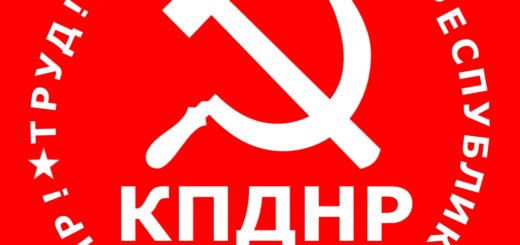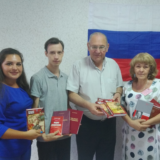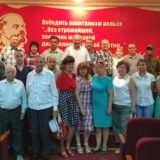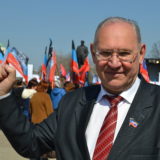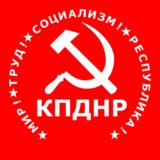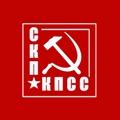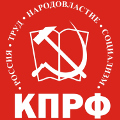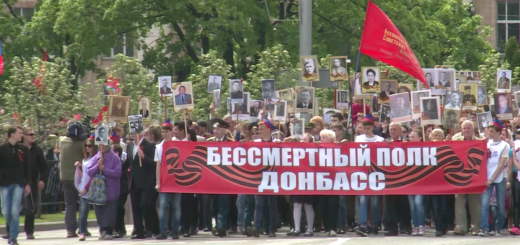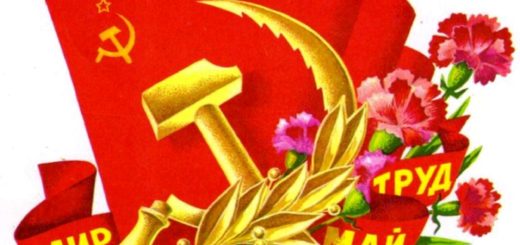On the centenary of the Great October Socialist Revolution, the well-known publicist Zakhar Prilepin wrote an article entitled “Counter-Revolution of 1917, Counter-Revolution of 2014.” In it, he proposes to discuss the thesis that a counter-revolution took place in Petrograd and Donbass. In the first case — against the «liberal-bourgeois February coup”; in the second — against the «bourgeois-nationalist coup on the Maidan.” This, in his opinion, is the main similarity between the events of a hundred years ago and the present day.
Since the nature of whats happening in the Donbass has already been mentioned, as Prilepin himself suggests, so as not to drag things out, let’s start with the main thing — the October Revolution as a continuation of the February Revolution. Vladimir Lenin repeatedly stressed that the Great October Revolution brought the bourgeois-democratic revolution to a conclusion. But the opposite was claimed by the Mensheviks. In 1918, Pavel Axelrod and Vera Zasulich called the October Revolution a counter-revolution. Of course, they did not say this because of their aversion to February, as Prilepin does, but on the contrary, with great sympathy for it. But this is not surprising, because extremes, as we know, always converge.
To understand the position of the Mensheviks, its sufficient to understand the attitude of Georgi Plekhanov to these events. He spoke out against Lenin’s «April Theses» and negatively judged the Great October Revolution. According to him, Russia was not ready for a socialist revolution, and the allegedly untimely seizure of power by the proletariat «will cause a civil war that will force it to retreat far back from the positions conquered in February and March of this year,” i.e., during the February Revolution.
In turn, Lenin argued that the democratic revolution, accomplished by the proletariat and the entire peasantry, must immediately develop into a socialist revolution. This is the essence of the Leninist definition of «uninterrupted revolution.” At the stage of bourgeois-democratic transformation, the struggle between the rural proletariat and the peasant bourgeoisie will inevitably sharpen. Consequently, the rural proletariat, together with the working class, will oppose the peasant bourgeoisie, and this will be the beginning of the socialist revolution. In relation to the peasantry, Lenins dialectical understanding of the essence of the Russian Revolution was fully demonstrated. «We support the peasant movement to the extent that it is revolutionary-democratic,» he wrote in his article «Social-Democracys Attitude Towards the Peasant Movement” (1905). “We are making ready (doing so now, at once) to fight it when, and to the extent that, it becomes reactionary and anti-proletarian. The essence of Marxism lies in that double task, which only those who do not understand Marxism can vulgarize or compress into a single and simple task.”
Lenin bluntly said that at first, while the proletariat was travelling along with the entire peasantry, the October Revolution was bourgeois. During this period, the Soviets united the peasantry in general and the class division within it was not yet ripe. The backwardness of the poorest peasants gave the leadership to the kulaks, and therefore, the Socialist-Revolutionaries were the dominant force.
In his work «The Proletarian Revolution and the Renegade Kautsky,» Lenin wrote that it was the Great October Revolution which brought the bourgeois revolution to its conclusion, because the monarchy and landowning class were completely smashed. But in the summer and autumn of 1918, when the Czechoslovak counter-revolutionary mutiny awoke the kulaks and a wave of peasant uprisings took place in Russia, the socialist phase of the revolution began. The Bolsheviks sent detachments of armed workers to the villages, who attracted the poor to their side and helped them crush the resistance of the bourgeoisie. At the same time, there was a split among the «Left Socialist-Revolutionaries»: one part joined the counter-revolution; the other remained with the Bolsheviks. The fluctuations of the petty-bourgeois party alienated almost all the proletarians and semi-proletarians from it, which resulted in the Bolsheviks winning a dominant position in the peasant Soviets.
«All who are familiar with the situation and have been in the rural districts declare that it is only now, in the summer and autumn of 1918, that the rural districts themselves are passing through their October (i.e., proletarian) Revolution,» Lenin wrote. “Things are beginning to change. The wave of kulak revolts is giving way to a rise of the poor, to a growth of the Poor Peasants Committees. In the army, the number of workers who become commissars, officers and commanders of divisions and armies is increasing. And at the very time that the simple-minded Kautsky, frightened by the July (1918) crisis and the lamentations of the bourgeoisie, was running after the latter like a cockerel, and writing a whole pamphlet breathing the conviction that the Bolsheviks are on the eve of being overthrown by the peasants; at the very time that this simpleton regarded the secession of the Left Socialist-Revolutionaries as a narrowing of the circle of those who support the Bolsheviks; at that very time the real circle of supporters of Bolshevism was expanding enormously, because scores and scores of millions of the village poor were freeing themselves from the tutelage and influence of the kulaks and village bourgeoisie and were awakening to independent political life.”
«On the other hand, if the Bolshevik proletariat had tried at once,” continues Lenin, “in OctoberNovember 1917, without waiting for the class differentiation in the rural districts, without being able to prepare it and bring it about, to decree a civil war or the introduction of socialism in the rural districts, had tried to do without a temporary bloc with the peasants in general, without making a number of concessions to the middle peasants, etc., that would have been a Blanquist distortion of Marxism, an attempt by the minority to impose its will upon the majority; it would have been a theoretical absurdity, revealing a failure to understand that a general peasant revolution is still a bourgeois revolution, and that without a series of transitions, of transitional stages, it cannot be transformed into a socialist revolution in a backward country.”
Unlike Lenin, the Mensheviks and Western Social Democrats were unable to understand the fundamental contradiction of the Russian Revolution because of their theoretical short-sightedness. The whole problem lies in lack of objectivity, which boils down to the inability to bring the idea of materialism to revolutionary practice. The Bolsheviks headed by Lenin perfectly mastered Marxism, so they were able not only to complete the bourgeois revolution, but also move on to the socialist transformation.
It is no exaggeration to say that the «Russian Spring» in the Donbass is a continuation of the «Euromaidan.” If there are any similarities between the present day and the events of a hundred years ago, then it is precisely this. October follows from February, the events in the Donbass from the events in Kiev. And this is not a paradox, but a real contradiction. At one time, the head of the Donetsk Peoples Republic, Alexander Zakharchenko, said that what the «Maidan» claimed to stand for was embodied in the DPR. In other words, the events in the Donbass are an embodiment of the petty-bourgeois idea of preserving market relations, but without the oligarchy. The problem is that such a society cannot survive for long. The logic of commodity-money relations is that they are either overcome, that is, capitalism is replaced by socialism, or they return to the original form.
If a counter-revolution had taken place in Donbass and Petrograd, then the former would have demanded the return of Viktor Yanukovych, and the latter of the tsar. Neither one nor the other happened. Calling the above-mentioned events counter-revolutions, Zakhar Prilepin is apparently paying homage to fashionable Western criticisms, which have recently been observed in the intellectual circles of Russia. This criticism can be carried out both on the left and on the right. Prilepin’s position is more reminiscent of criticism from the right, conservative criticism, since he calls the October Revolution a counter-revolution. At the same time, he tries to compare the Great October Revolution and the «Russian Spring» in the Donbass by external features. In contrast, the task of Marxists is to reveal the internal contradictions and conduct a proletarian line in relation to these events.
Stanislav Retinsky, Secretary of the Central Committee of the Communist Party of the Donetsk Peoples Republic

